As we wind our way into the cold months of the year in general, I find myself reaching increasingly towards a warming, darker cup of spirits instead of my usual clear summer sprightly drink; namely, for a whiskey and at that, probably a bourbon.
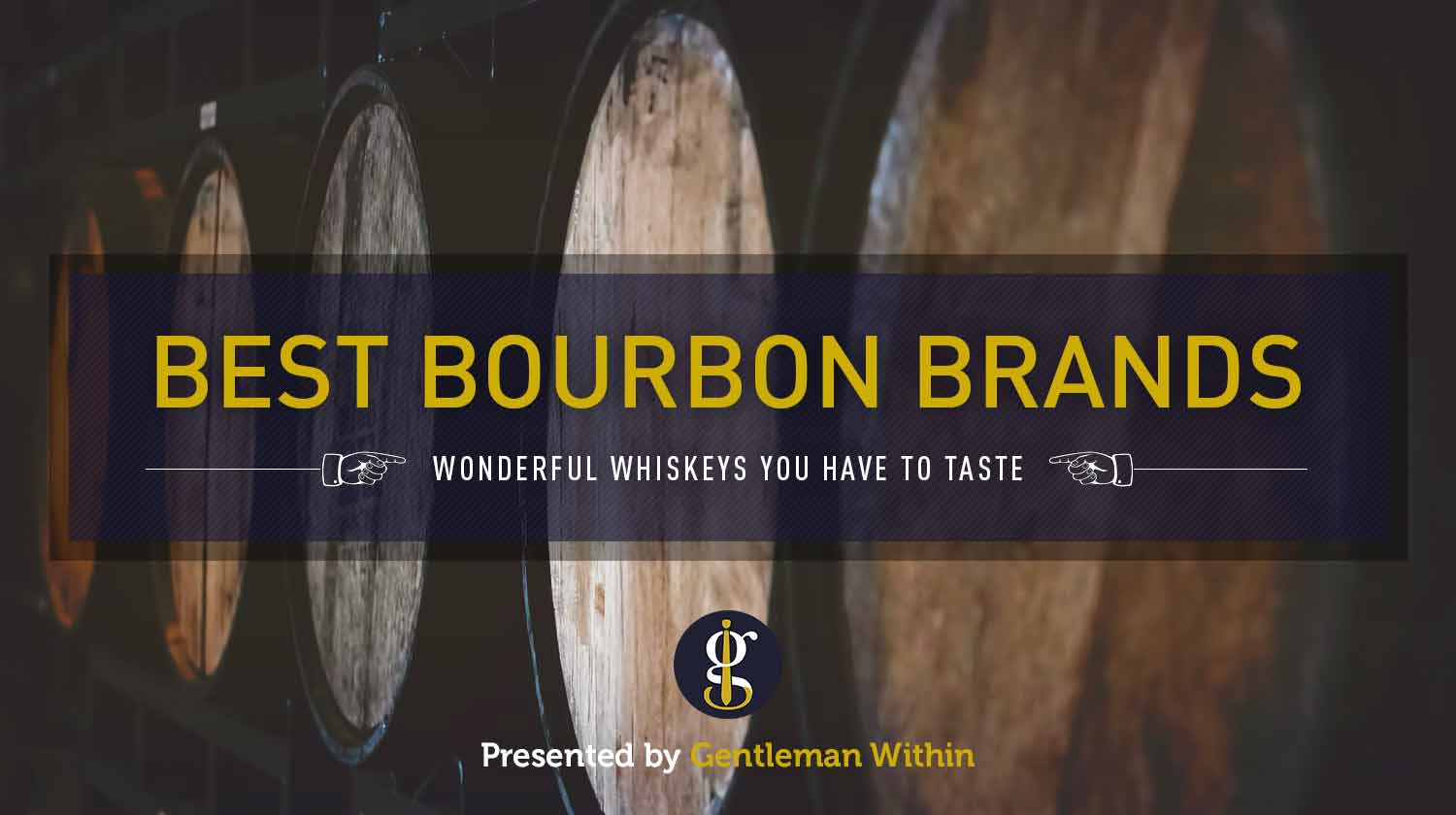
Subscribe to The Gentleman Within Podcast.
What Is Bourbon?
Bourbon is the only true American contribution to the wonderful world of booze. A distinct form of whiskey, it is barrel-aged and must be produced at least 51% from corn.
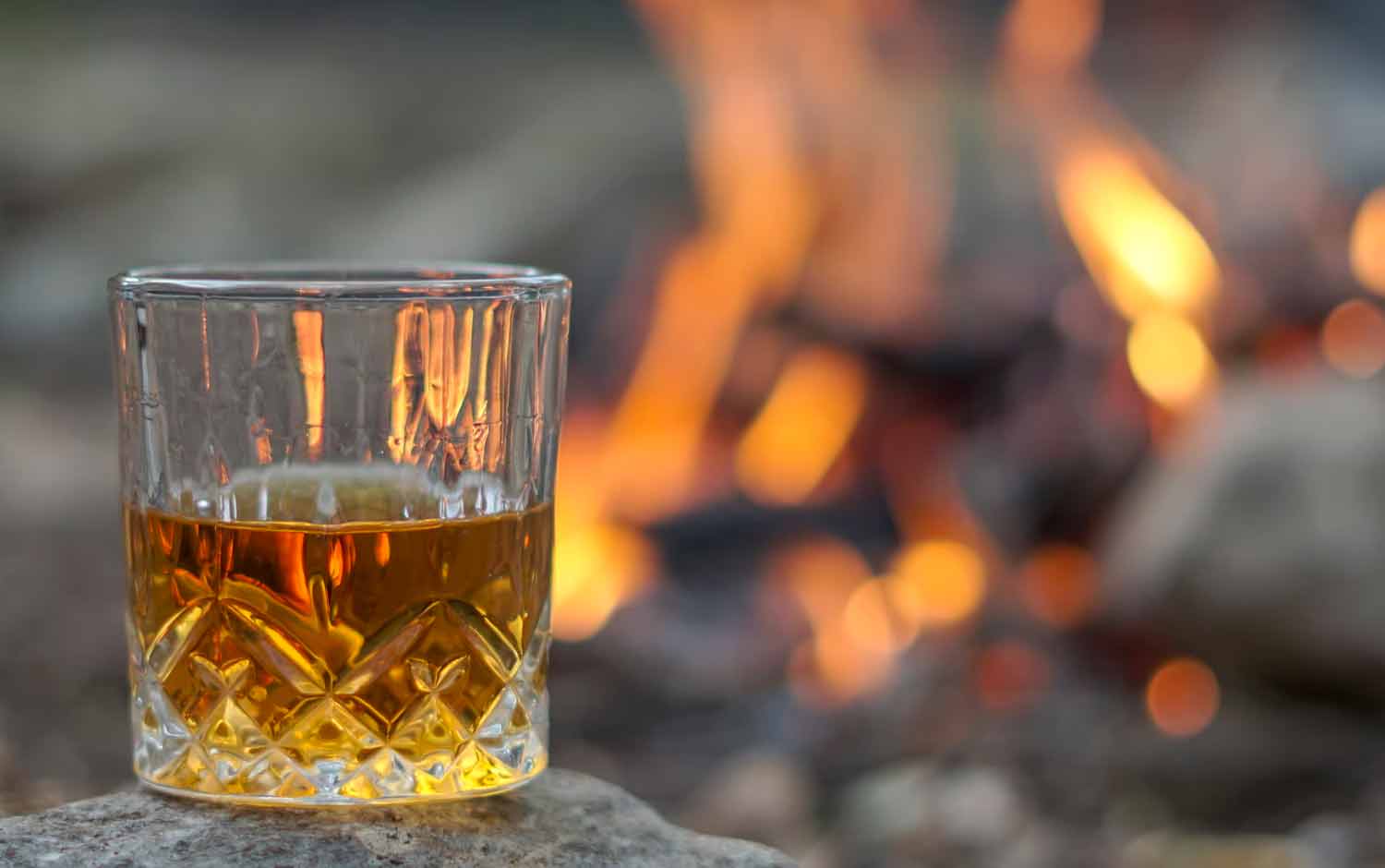
It has been distilled in this country, where it was created, since the 18th century and although it is associated with the South (particularly Kentucky) we can now easily find bourbons from all over the country.
Abridged History Of Bourbon
Common lore attributes the invention of bourbon to Elijah Craig (a Baptist minister!), whose name now graces a popular brand of bourbon, but this is entirely apocryphal.
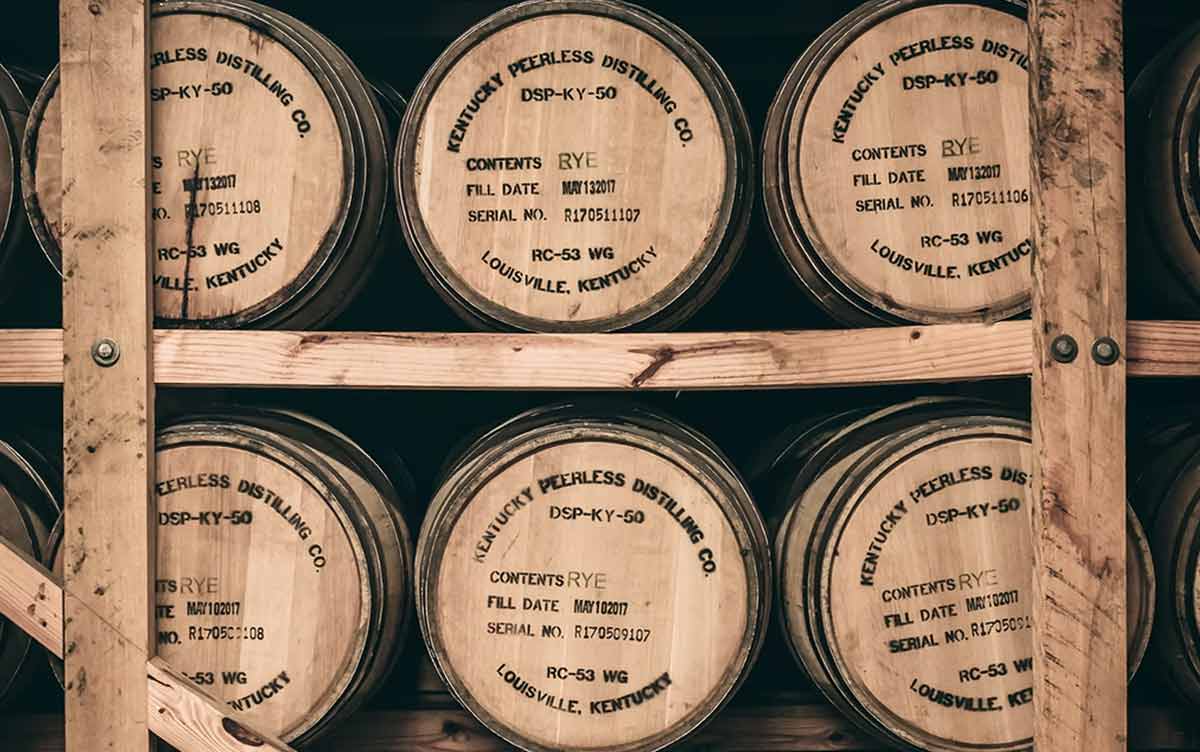
What is important to know is that this was the product of many immigrants moving here from around the world and is a rich thread in the tapestry of this nation.
What Makes It Bourbon?
There are a great many legal requirements (see 27 CFR §5.22(b)(1)(i) for all of the gory details) for a bourbon but a few which we all see printed on labels which might change how you shop. Namely:
All bourbon must be bottled at 80 proof or more (anything less is not bourbon)
There is no minimum aging period, except for “straight” bourbon which is a minimum of two years.
Blended bourbons must list the age of the youngest bourbon in the mix, except if blended with grain alcohol (think Everclear), which is not counted.
“Bottled-in-bond” must be aged at least four years and is a separate sub-category dealt with below.
When shopping for bourbon, as I do all of the winter months, it’s useful to keep these distinctions and the different types of bourbon handy.
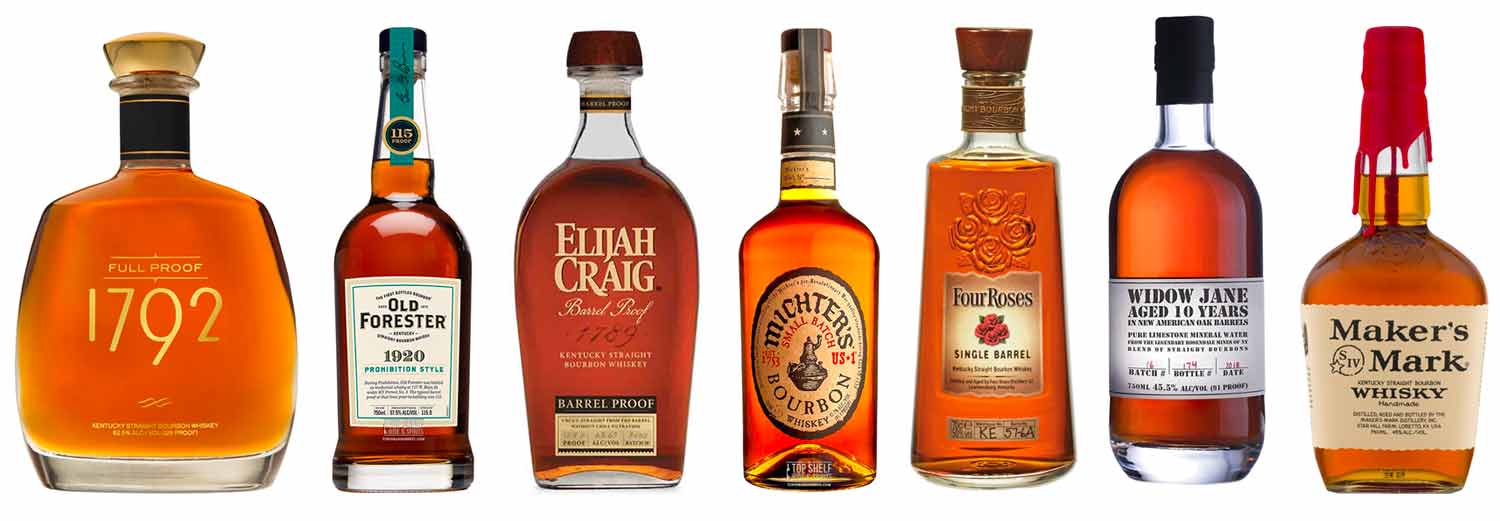
The Best Bourbons Under $100
And now let’s get into the best bourbons, all under $100.
» Related: You might enjoy this article on the Best Bourbon Drinks (Classic Cocktails You Can’t Go Wrong With).
1. 1792 Full Proof
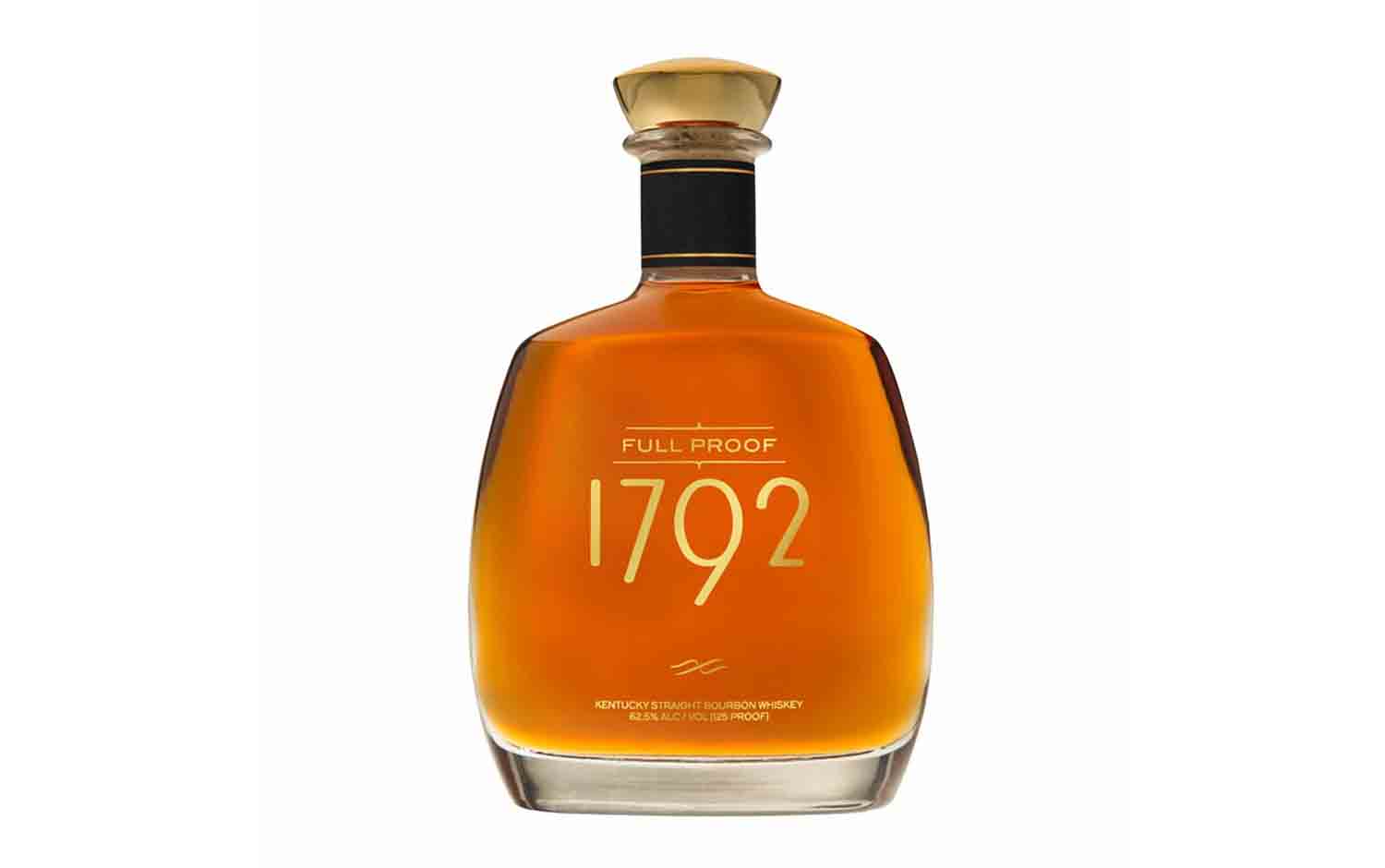
1792 is always the first bourbon I reach for when I retire my G&Ts for the summer and the full proof iteration is even better. 1792 comes from Bardstown, KY and is named for the year Kentucky became a part of the US.
1792 full proof comes in at 62.5% ABV and around $60 a bottle (regular 1792 is around $30 a bottle and is lovely on its own). The nose is elegant and punchy while having a smooth taste for its high octane bottling – this might be a little spicy for some and would be best diluted with a tiny amount of water (or on the rocks). Expect notes of caramel, chocolate, and a (common for its type) finish of smoke / tobacco.
1792 full proof is at the top of this list for its ability to serve as an all-rounder, backbone to any bar. This can be mixed, enjoyed neat, or on the rocks all to equal ability. Depending on how much I want to remember my night, I usually have this in an Old Fashioned to cut down just a little on the high ABV.
2. Old Forester 1920 (Prohibition Style)
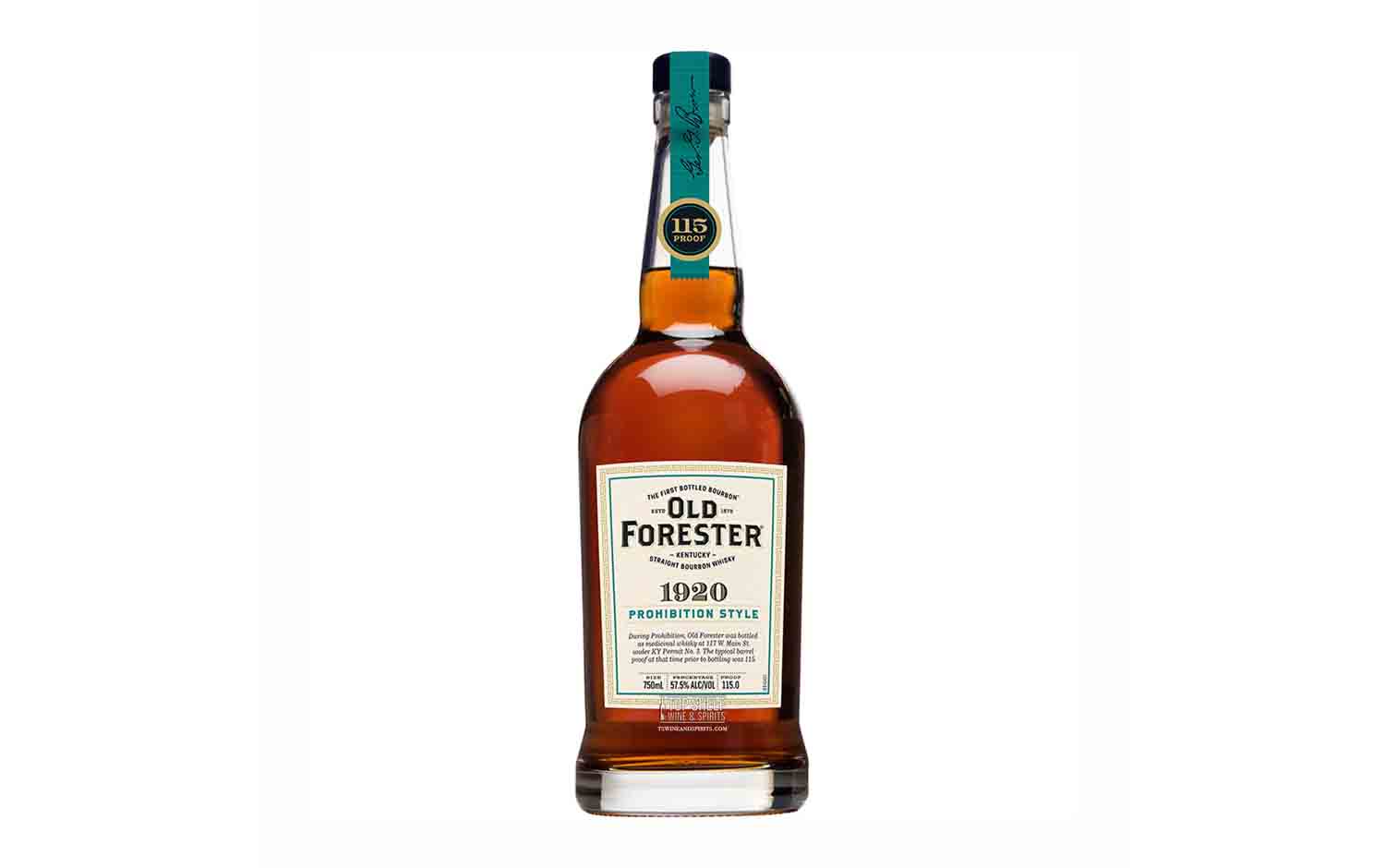
Another variation on a common bourbon, Old Forester 1920 is based on Old Forester’s original, 1920 recipe (hence the name) and references the Volstead Act which put Prohibition into effect (a huge boon for a few brands) and licensed Old Forester, along with five other distillers, to continue to produce bourbon for medicinal reasons.
Old Forester 1920 is bottled at 57.5% ABV and runs around $65 a bottle. It has a strange but fun combination of cherry, banana, maple, coriander, apple, all around bakery goodness which finishes like a s’more. A fall favorite and greatly enhanced by enjoyment near a woodfire.
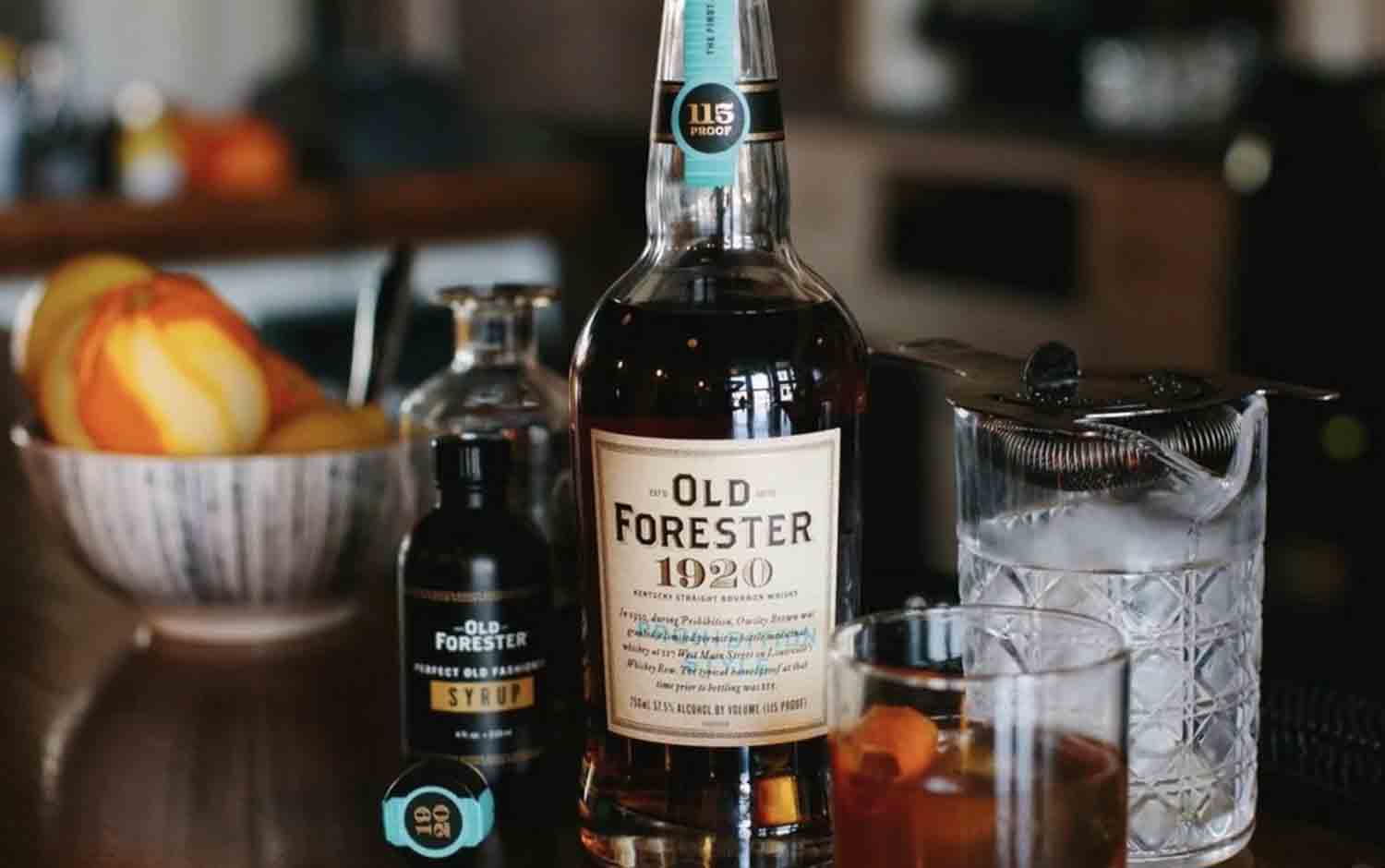
Have this on its own or be a little adventurous in a highball, but be wary of diluting its unique character by adding too many other things.
3. Elijah Craig Barrel Proof
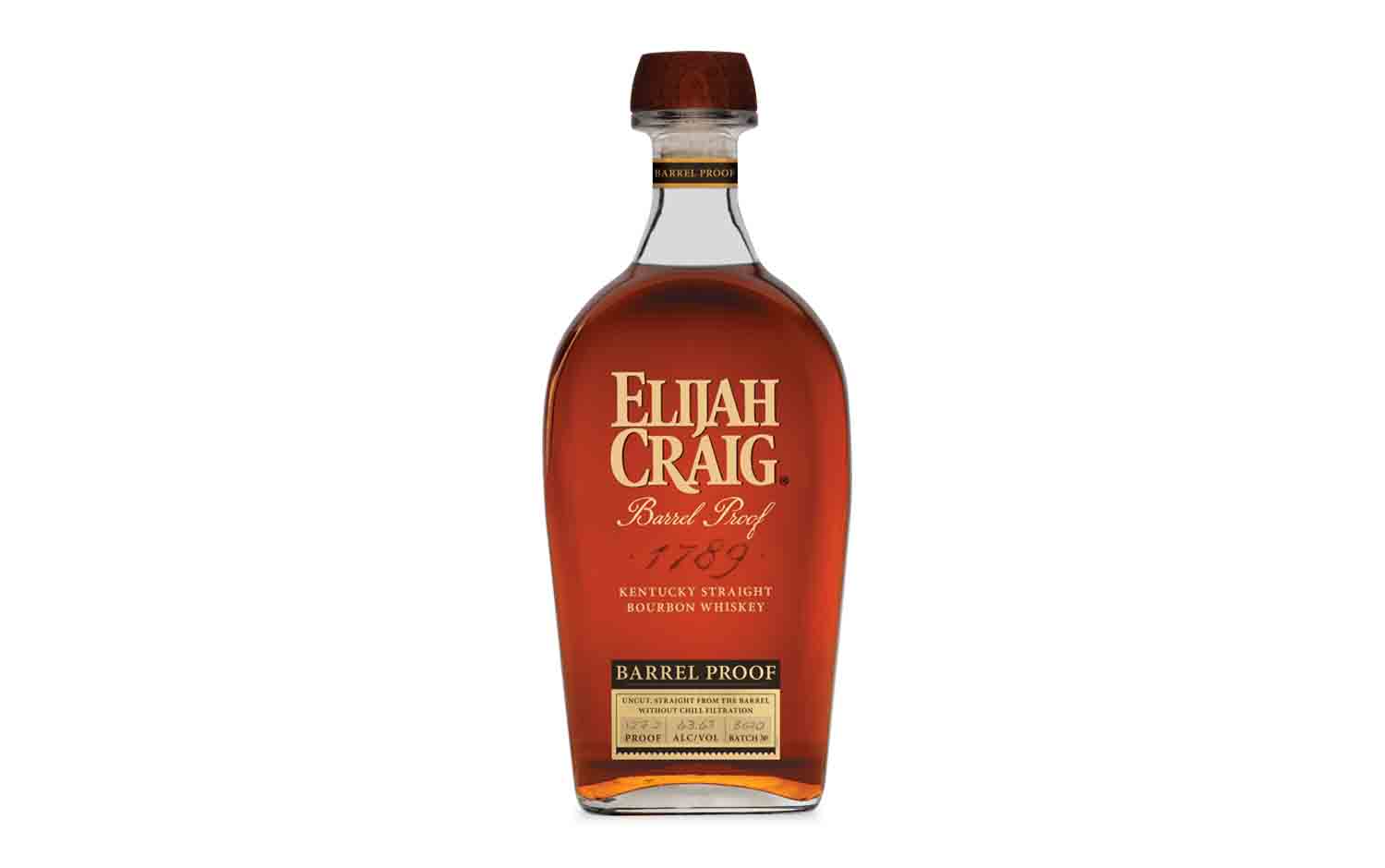
Named after the eponymous Baptist mentioned above, this is the barrel proof iteration of the brand and is probably the best they have on offer (that you can reasonably find in a local store).
Because it is barrel proof, you get the experience much closer to the distiller as they take it out of the cask instead of the modified regular Elijah Craig you might otherwise enjoy.
Elijah Craig Barrel Proof is bottled at an exciting 66.4% ABV and runs a slightly overpriced $80 a bottle. You can expect intense vanilla, caramel, butterscotch, and the usual oak and apple of bourbons, but it pleasantly finishes on a spicy / black pepper palate with a hint of cinnamon.
This is an easy drinking sipper and a comfortable addition to any bar for its versatility. It’s worth mentioning that barrel proof is not quite as easy to find as the small batch.
» Related: Check out this list of Exceptional Gins Under $100 (For Gifting or Enjoying)
4. Michter’s US* 1 Kentucky Straight Bourbon
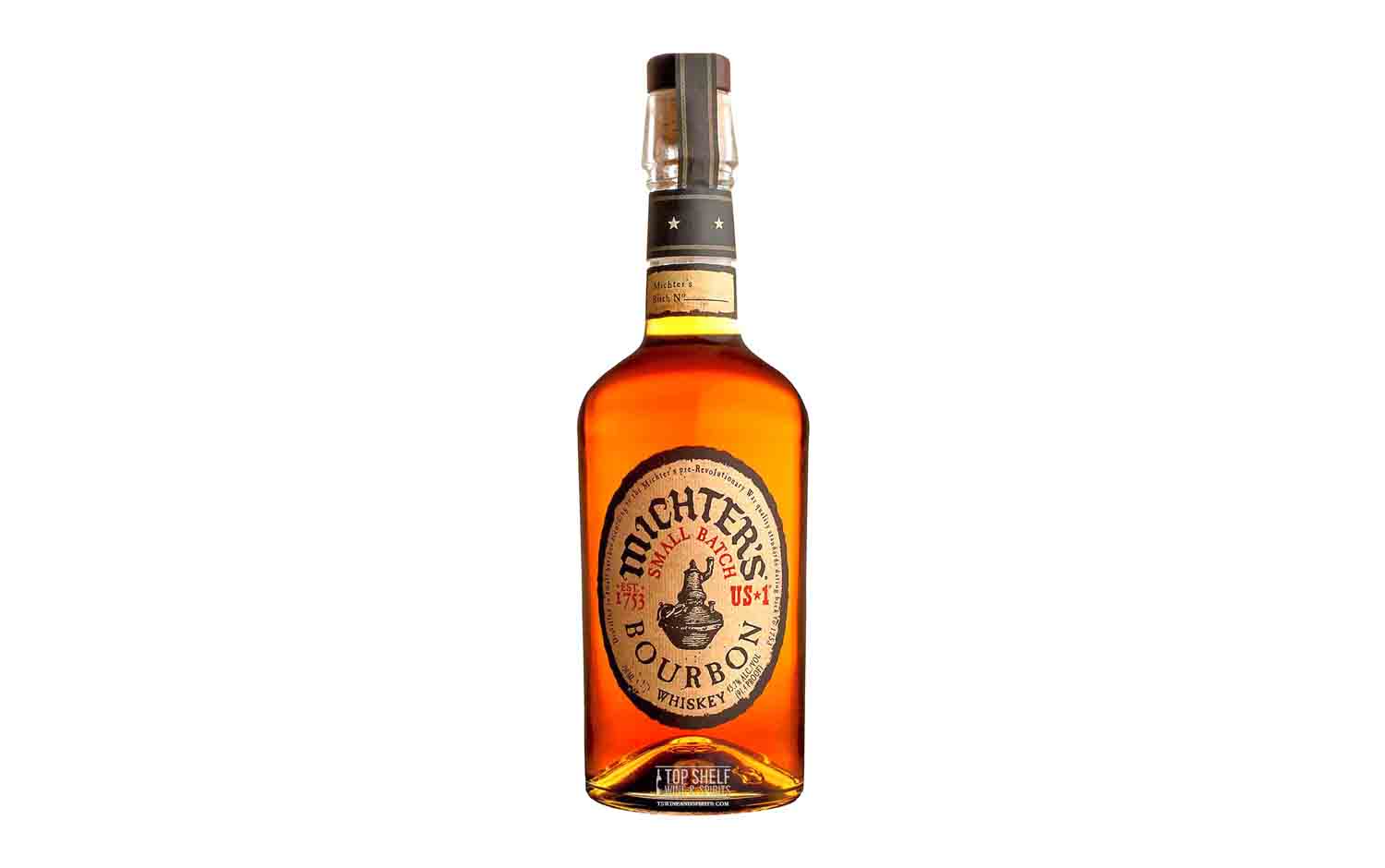
Michter’s best entry (aside from their rye which is an entirely different article), it is so named to reflect Michter’s claim as the United States’ first whiskey company.
This is a small batch offering which is “batched” in a tank which doesn’t fill more than 25 barrels – this means that every bottle has more-than-usual attention paid on it by volume which gives you a more bespoke product.
Michter’s US*1 Kentucky Straight Bourbon is bottled at a much more reasonable 45.7% ABV and similarly runs a reasonable $50. The tasting notes are a little more simple (which reflects its ABV but also price point) and have caramel, vanilla, smoke, but, pleasantly, stone fruit as well.
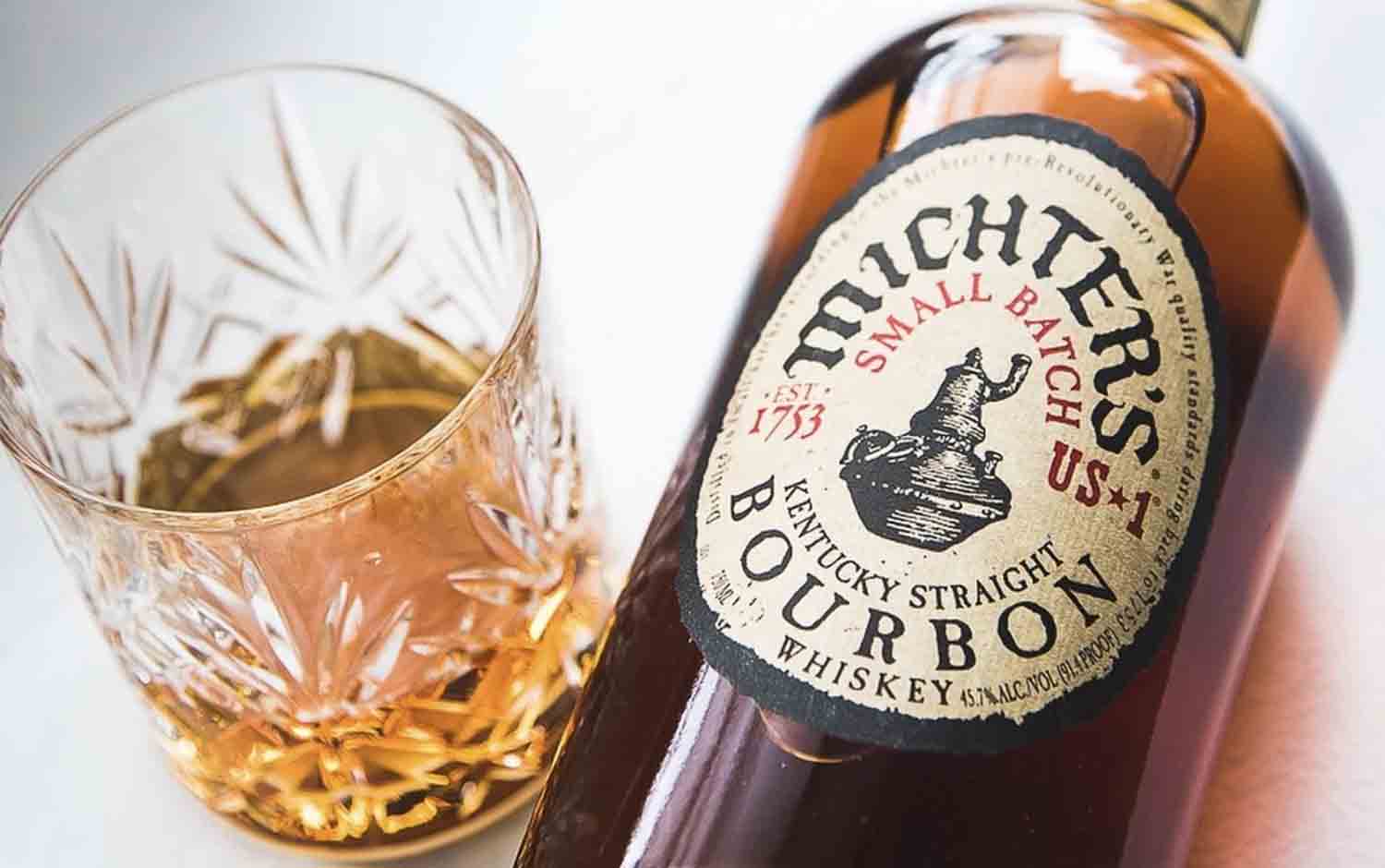
Generally in these lower ABV bourbons you will find a greater chance of lighter flavors like stone fruit instead of the intense tobacco of earlier entries.
This is a great bourbon to pour in anything from an Old Fashioned, highball, or drink on ice while enjoying, but not feeling like you have to stop doing everything else in your life to focus on appreciating every drop.
Quick note: If you’re enjoying this guide on best bourbon brands under $100, then you’ll probably find my other writing on all things style, self-development & drinks useful. Each week, I share updates, style tips and other things not shared on the blog through my free email newsletter.
To join now, just enter your email address below and click “Get Updates!”
5. Four Roses Single Barrel
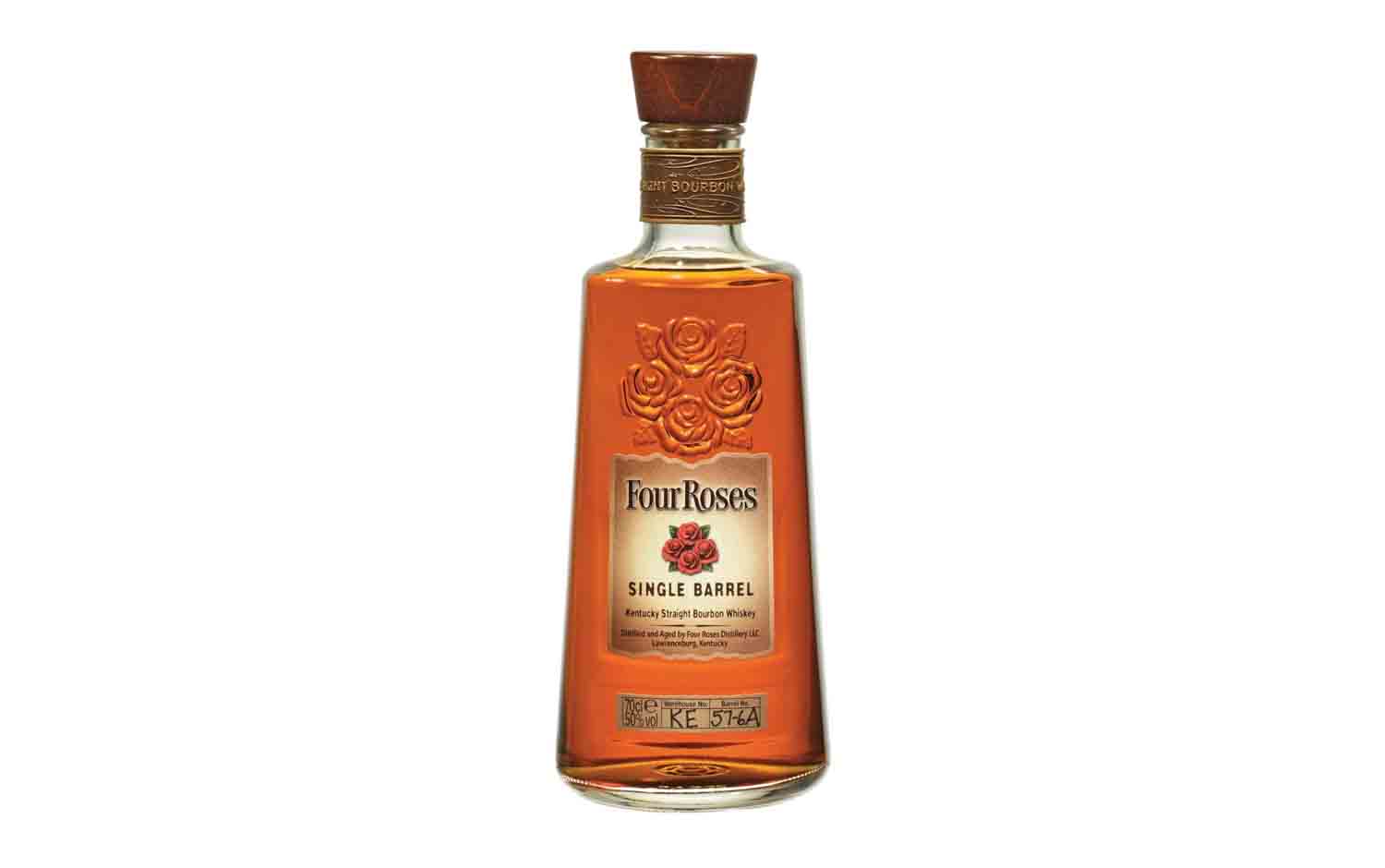
Four Roses has been around since the 1800s and this is the strongest entry they have in their expansive portfolio. It spends anywhere from 8-10 years in the barrel which helps balance its ABV with a smoothness otherwise not found in bourbons of this tier.
Being single barrel means you might experience small variation over time but they will all represent the same taste portfolio and style.
Four Roses Single Barrel is bottled right at 50% ABV and costs in the mid-$40s. Another stone fruit entry, this first opens with a maple nose and then gives way to a more delicate and lasting fruit palate.
This is another excellent sipper neat, but is also a strong contender to impress someone who doesn’t know much about bourbon but is also willing to spend up to $50 on a quality product.
Because it is not so overwhelming in a heavily laden palate, I would also enjoy this as a Manhattan or, if I was feeling totally wasteful, as a whiskey ginger (the lime seems to make it happy).
» Related: You might like this guide on Jack vs Jim vs Johnnie.
6. Widow Jane 10 Year
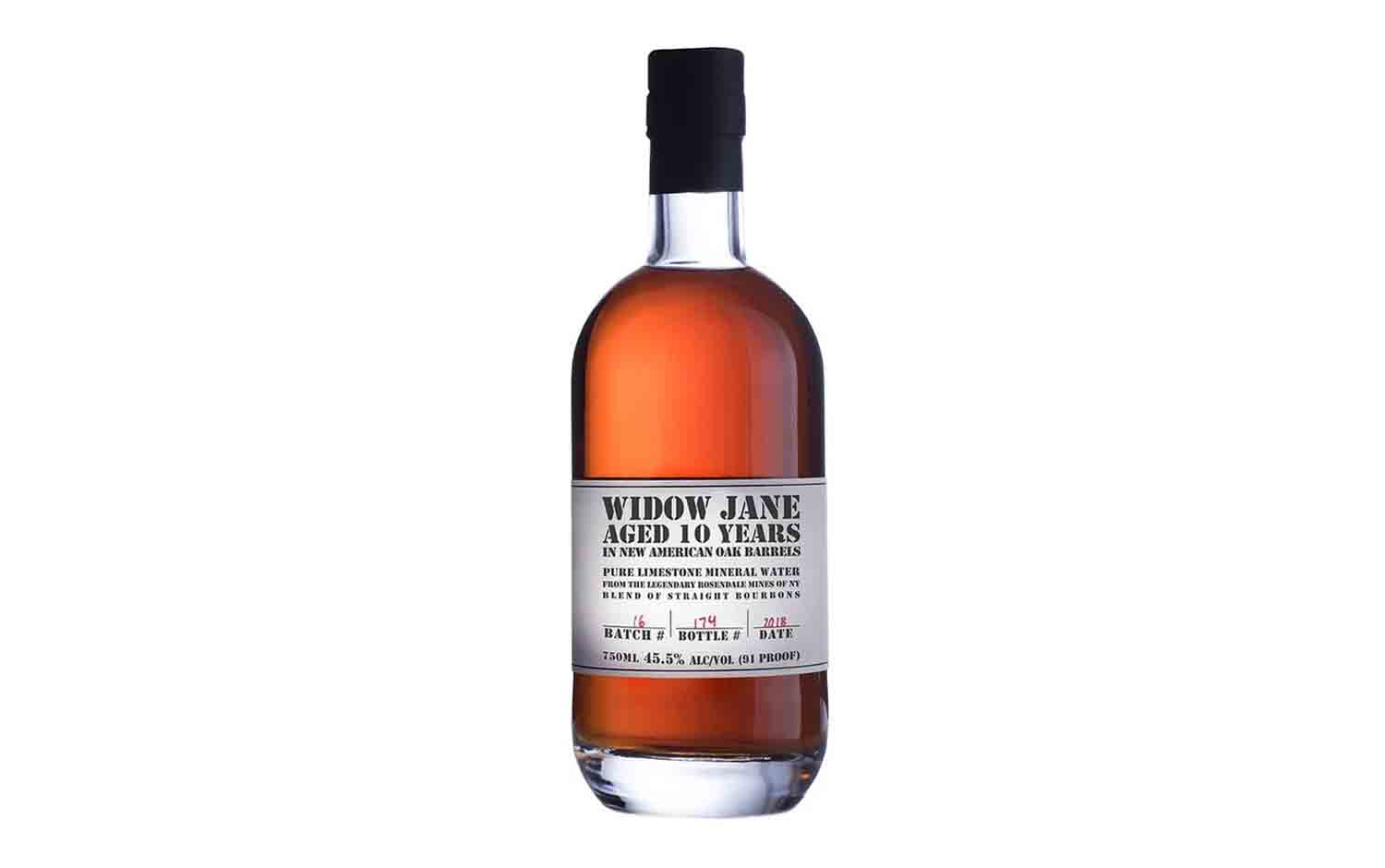
And speaking of Manhattan, Widow Jane 10 Year is a departure from the earlier entries in that it sources bourbon from Kentucky, Tennessee, and Indiana and then blends them in Brooklyn, New York to create a unique and very punchy bourbon.
Once blended, the team proofs the bourbon by cutting it with limestone water from the Rosendale mines 100 miles north of Brooklyn (this includes the Widow Jane mine which is the inspiration for the name).
Widow Jane 10 Year is bottled at 45.5% ABV and costs around $70 (this price is sometimes much lower depending on seasonal availability and location, so keep an eye out). This palate returns us to the velvety maple realm but adds a fun bit of almond, butter, honey, cherry, orange, and a bit of smooth tobacco.
Although I have been told this is an excellent sipper, I’m much more likely to make a Manhattan with it or even a Boulevardier. Anything that can draw out the buttery, biscuity, smoothness along with the cherry and orange will be a delight with Widow Jane 10 Year.
7. Maker’s Mark
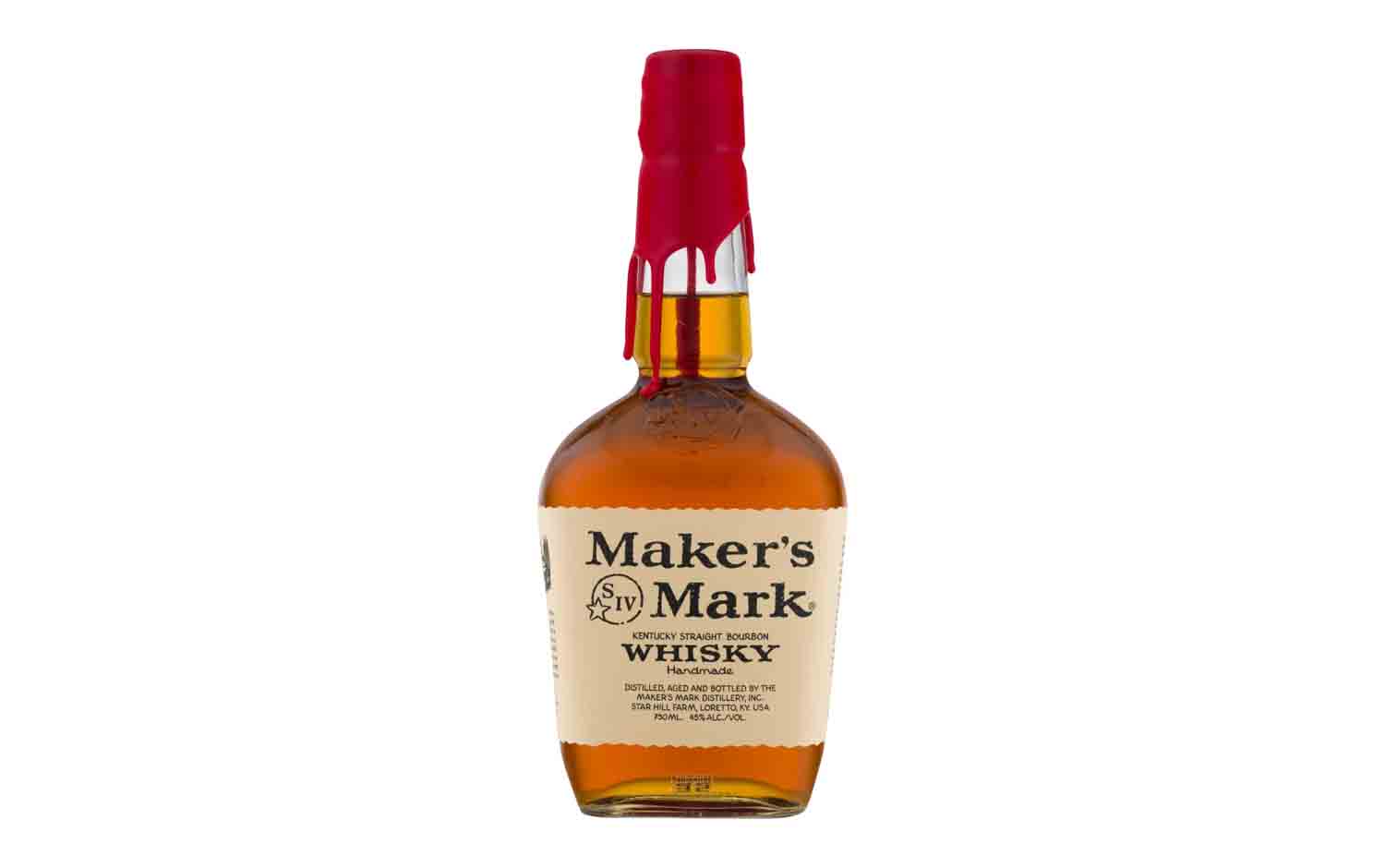
Maker’s – a classic, omnipresent bourbon nevertheless continues to inspire. Unlike many on this list, or many bourbons in general, this is a “wheated” bourbon which results in a much more sweet palate than the dry and spicy rye which is often used to supplement the 51% corn minimum to make it bourbon.
The company story says the founder in 1953 didn’t want to wait around for bourbon to age so he instead baked loaves of bread to test the mix he’d use to mash and distill. The winner was a corn, malted barley, and heavily red winter wheat loaf. This is still the basis for Maker’s Mark almost a century later.
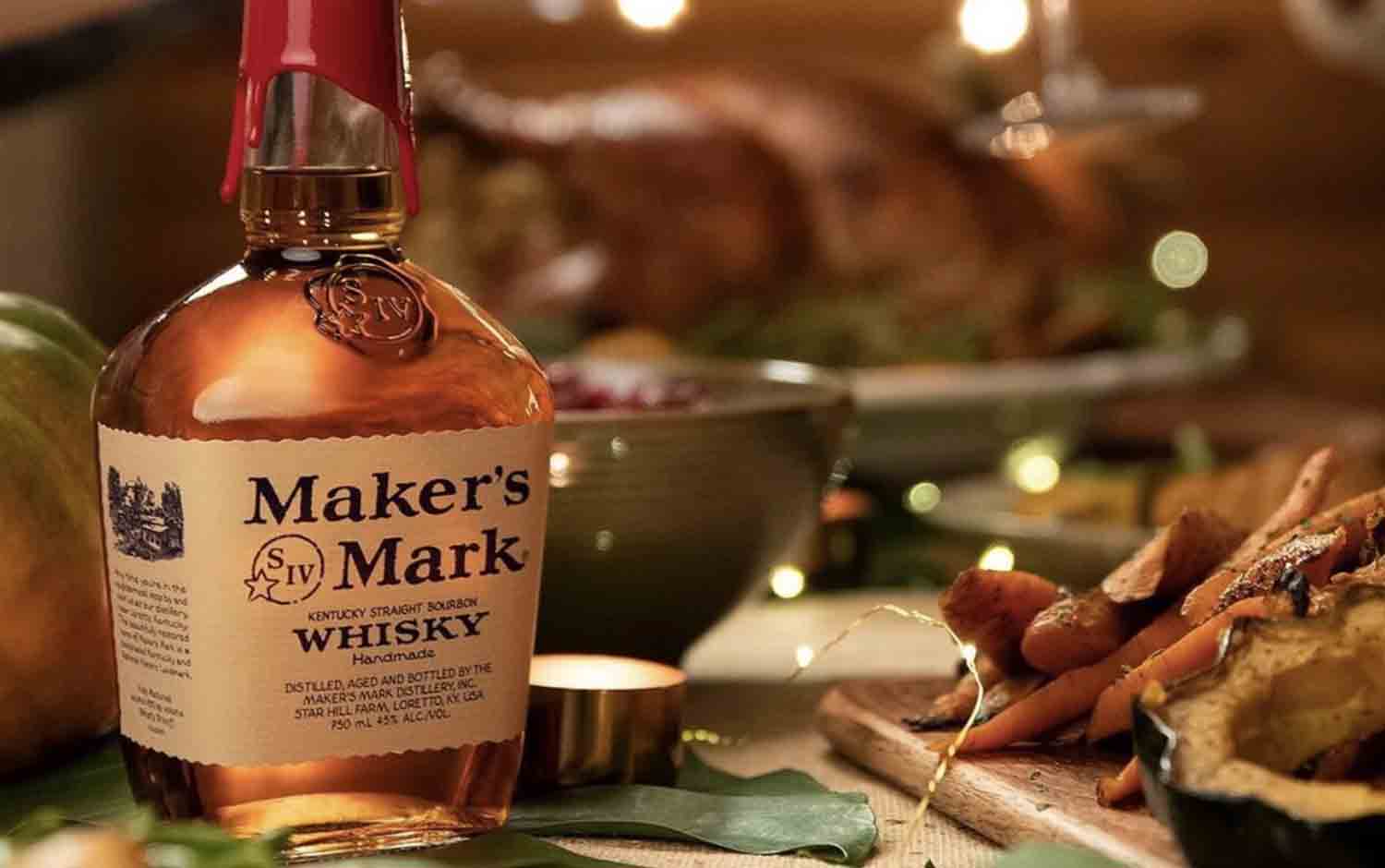
Maker’s Mark is bottled at 45% ABV and should never cost more than $30. The palate is a lot less spicy than a rye heavy bourbon, and will give notes of honey and butterscotch and finish in a pleasant vanilla and barley taste.
Unlike many on this list, this plays very well with peaches, so feel free to be adventurous with something like a fuzzy navel or keep it delicious with a bitters-light Manhattan since it plays so well with vermouth.
Wrapping Things Up
All of the above bourbons are a delight. They each have their unique place, purpose and benefit to bring to your home bar and having a display like the seven above will impress any houseguest during not only the winter months, but all year-round.
This is not to say there aren’t a great many bourbons that aren’t on this list — I’m sure someone will be upset that their favorite bourbon isn’t on here.
There are plenty of offerings like Old Overholt which is dirt cheap, pretty good, and historic that just couldn’t make the list. When in doubt, jump in feet-first and start experimenting until you build up your preferences and can refine to exactly what you love.
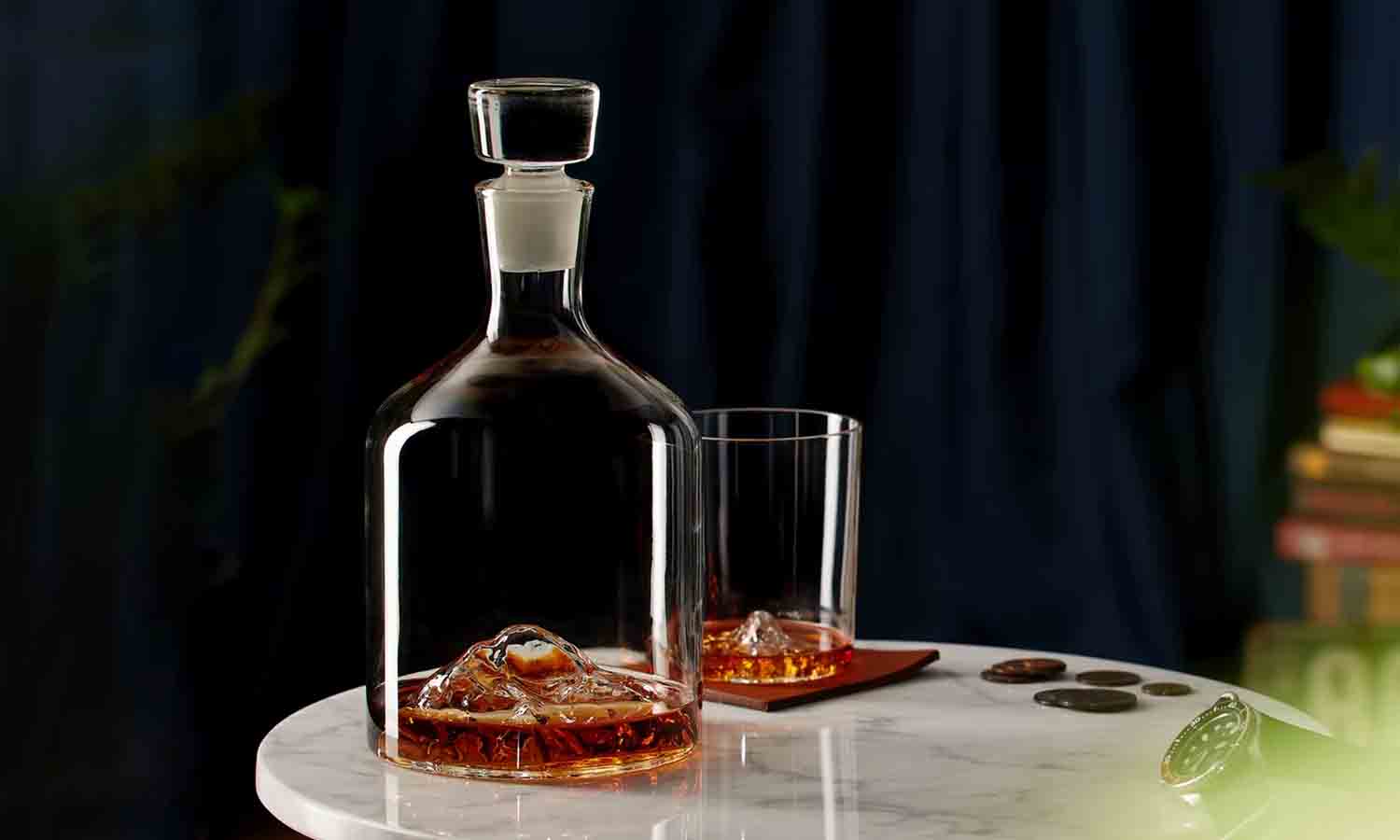
The most important thing if you’re nervous about bourbon is to feel empowered walking into a liquor store and buying whatever makes you happy.
Years ago when I started drinking, I would often talk to liquor store workers who are usually a wealth of knowledge and happy to talk to anyone about their wares.
Once you build out your bar with some of these cornerstone liquors in this article, you can start using them with more confidence with classic cocktails.
Bourbons are the foundations of cocktails and have a unique place in this country, due to prohibition, in the growth of the cocktail industry. Armed with these bottles, you can confidently grow your at home bartending abilities and impress any guests.
Happy drinking!
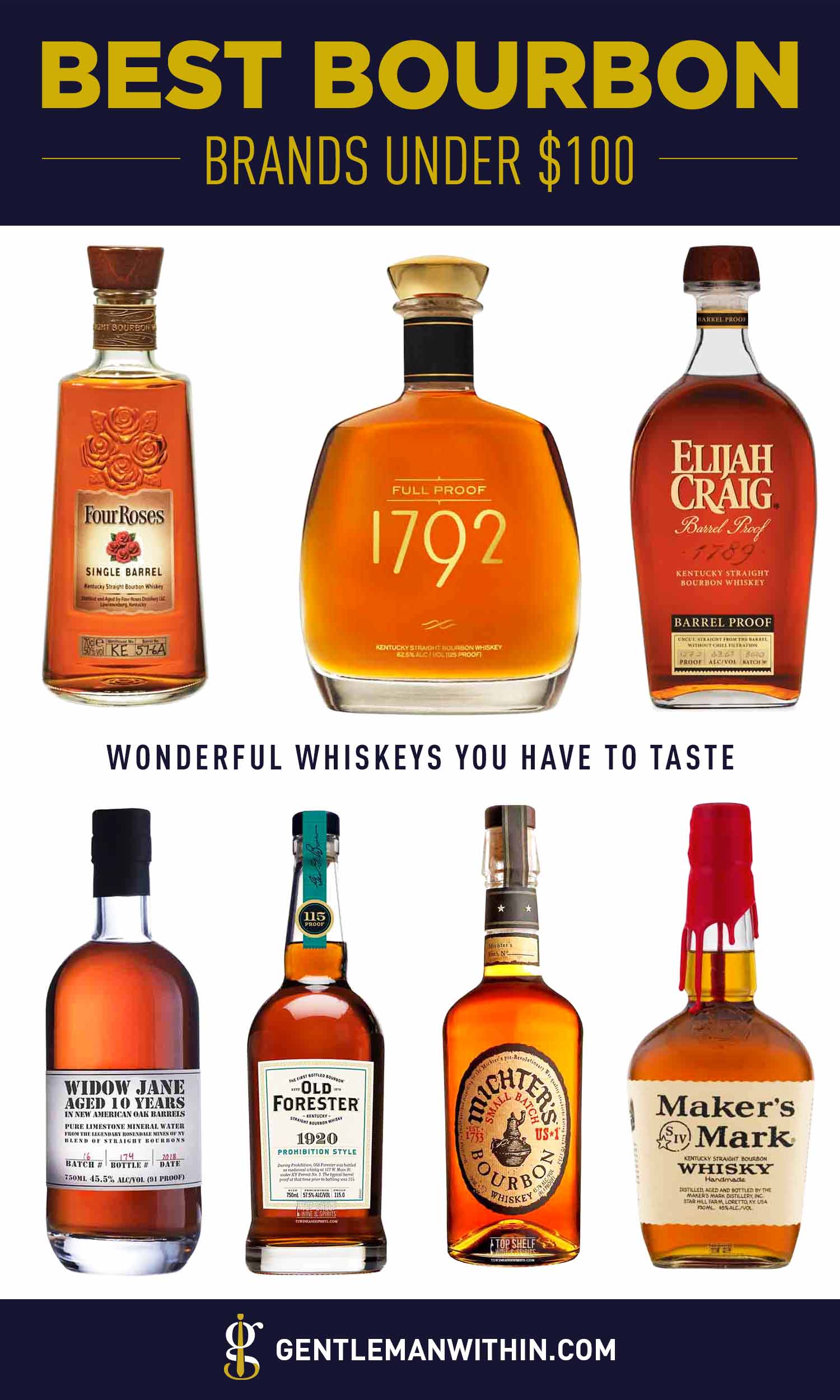
About Elijah

Elijah C. Mills is a native of Indiana, but now resides in Washington, D.C. A lover of all things ethanol and bow ties, you can find him out and about at various D.C. events. He is an active Episcopalian and works as a Parish Administrator at a DC Episcopal church. He’s always happy to meet over a drink and can be easily talked into most social events.
What are some of your favorite Bourbons?
Let’s continue the discussion over in the Gentlemen Within Private Facebook Community. Looking forward to seeing you in there.
LIKE WHAT YOU READ?
Get more posts like this plus style tips & advice delivered straight to your inbox.

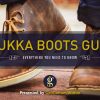
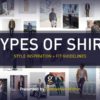



Thanks for the helpful guide. I never know where to start.
You’re welcome! Glad it was helpful. -K
Blue Run. Kentucky Owl and widow Jane lucky 13
Nice, thanks for those recos. -K